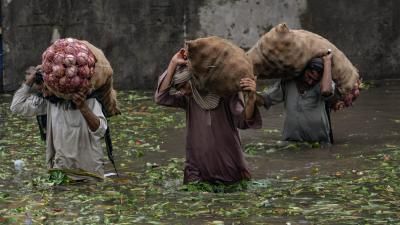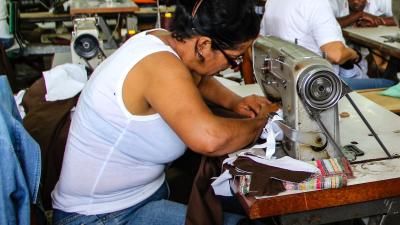
Disaster resilience concern raised for Pakistan amid flooding
Amid the devastating floods across Pakistan, a new global index has found the country to be in the five countries least resilient to disasters caused by natural hazards and other shocks.
This page is approximately a 4 minute read
This page was published on

of female workers are concerned about violence and harassment in the workplace, with women in Malawi and Swaziland expressing the greatest levels of worry.
Globally, the World Risk Poll finds that nearly 11 per cent of female workers have experienced workplace violence and harassment, similar levels to men (12 per cent). However, the poll finds a significant gender gap in some countries with 39 per cent of female workers in Australia experiencing this issue compared to 24 per cent of men. Australia ranks sixth in the world for women experiencing violence and harassment in the workplace.
Women across the world who cited violence and harassment as a source of risk to their personal safety while working, and those who have experienced, or know someone who experienced, this issue at work in the two years prior to polling.
(% country female workers)
Fourteen per cent of female workers globally have been seriously injured at work. This rises to 23 per cent where women are working in more dangerous areas such as agriculture and fishing. In East Africa 28 per cent of female workers report serious injury at work, and in South Asia this figure is 27 per cent – reflecting the high proportion of women working in the regions’ large agricultural sectors, which suffer more workplace safety issues.
In most regions of the world more women than men named crime and violence amongst their greatest sources of risk when asked about their top of the mind concerns. The biggest gender gap is again seen in Australia and New Zealand where 34 per cent of women name crime and violence as a risk, 18 percentage points above their male counterparts. Women are most concerned about crime and violence in Latin America and the Caribbean, as well as Southern Africa, where 61 per cent cited it as a risk.
Being able to quantify risks with basic statistics is essential to assessing our situations regarding safety and risk, comparing them to others and measuring progress. The World Risk Poll shows that globally women have lower levels of basic arithmetic than men, almost certainly due to lower levels of education provision. This puts women at a disadvantage when presented with information about risk and hampers their ability to use that information to take action.
As a result of this, those wanting to make people more aware of the risks they face and to empower them to take action to reduce risks, need to consider how accessible their communications are to the people most affected.
Georgina, a World Risk Poll respondent from Mexico City, Mexico tells the Foundation about the dangers of taxi cabs.
Dr. Sarah Cumbers Former Director of Evidence and Insight, Lloyd’s Register Foundation
Historically women have been disadvantaged financially, educationally, and in the workplace. This affects their ability to manage risks and avoid harm. Improving how risk and safety issues are communicated to women and sharing ways in which others have taken action will contribute significantly to efforts for greater equality.
Women across the world who cited violence and harassment as a source of risk to their personal safety while working, and those who have experienced, or know someone who experienced, this issue at work in the two years prior to polling. (% country female workers).
